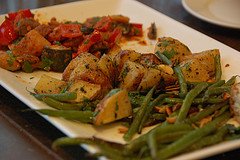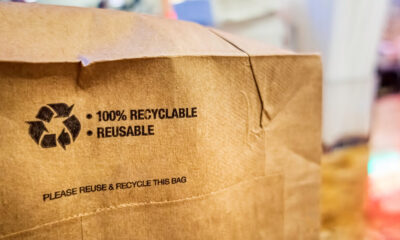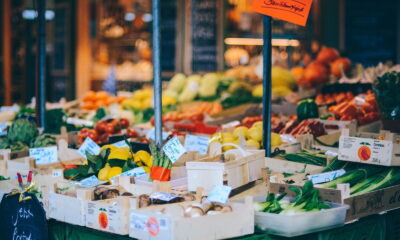

News
Climate Week and good low carbon grub
This week is Climate Week and one novel initiative this year challenges people to be more environmentally friendly by eating a low carbon meal. But why is this important and how can it be done?
Creating awareness that good food that is low in cost and good for the environment is the main agenda. “It is a chance for people all over Britain to show how the food that they eat can be a part of the solution to climate change”, states the website.
This week is Climate Week and one novel initiative this year challenges people to be more environmentally friendly by eating a low carbon meal. But why is this important and how can it be done?
Creating awareness that good food that is low in cost and good for the environment is the main agenda. “It is a chance for people all over Britain to show how the food that they eat can be a part of the solution to climate change”, states the website.
To celebrate Climate Week and help you visualise the carbon footprint of the food you eat on a regular basis, we’ve compiled this excellent infographic, which takes 100g of each food type and represents its carbon footprint as a car journey.
Click to enlarge.The Eat Low Carbon campaign recommends three steps to make life easy:
Eat less meat and dairy
You can cut down on meat and dairy by experimenting with vegetarian or vegan meals once a week. Meat and dairy both have high carbon footprints because of the way they are produced.
A report from the UN in 2006 called Livestock’s Long Shadow – Environmental Issues and Options said that meat production accounts for nearly a fifth of all global greenhouse gas emissions and notable our infographic very clearly displays that beef and lamb are the worst carbon offenders.
Choose local and seasonal
Selecting ingredients that are local and seasonal means the food hasn’t travelled as far to get to your plate.
You could even go as far to start growing your own ingredients. Our latest in depth report, The Rise of the Sustainable Home, shows that using your back garden to feed your family is a growing trend. Beyond being green, it is an excellent way to combat increased food prices.
Use up those leftovers
Instead of throwing away unused food they suggest using anything left over from dinner for your lunch the next day. Although UK households are wasting less food, British shoppers are still wasting 10% of their weekly shop. So Government initiatives and supermarkets are showing people the best way to keep their leftovers as well as handing out interesting recipe ideas.
Eating a low carbon diet needn’t be boring but can be seen as an opportunity to become increasingly experimental.
You can tell Climate Week about your low carbon meal and even enter the low carbon meal recipe competition. The top ten winners will get Tesco vouchers or a Sodastream machine and the best recipe prize is a meal for four at a London restaurant.
Looking beyond low carbon food, if you want to start shopping in a more environmentally friendly way then we recommend checking out the Ethical Superstore, all of whose products are sourced for their low impact on the environment.
If you’re really serious about reducing your carbon footprint at home, visit Good Energy who can help you switch to 100% renewable energy and possibly save money at the same time.
Related articles:
UK households wasting less food
British shoppers throw away 10% of the weekly shop
The Rise of the Sustainable Home
Infographics: Ben Willers. Picture source: waldopics.


 Environment10 months ago
Environment10 months agoAre Polymer Banknotes: an Eco-Friendly Trend or a Groundswell?

 Environment11 months ago
Environment11 months agoEco-Friendly Home Improvements: Top 7 Upgrades for 2025

 Features9 months ago
Features9 months agoEco-Friendly Cryptocurrencies: Sustainable Investment Choices

 Features10 months ago
Features10 months agoEco-Friendly Crypto Traders Must Find the Right Exchange




























